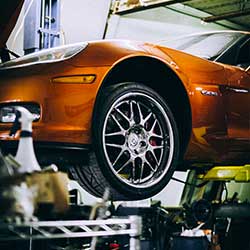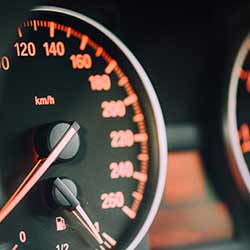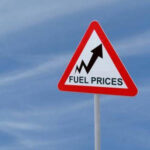Across the UK, average petrol and diesel prices can vary by as much as 20 pence per litre in new and used cars. The most expensive location for drivers in the last 12 months was Argyll in northern Scotland. Motorists spent an average of 125 pence per litre for both petrol, and diesel. In stark contrast, drivers in Tilbury, Essex, spent an average of 103.9 pence per litre for petrol and 104.5 pence per litre for diesel.
The variation means that an Argyll driver covering 9,000 miles a year at 40 pence per litre, would spend over three hundred pounds more than if they lived in Tilbury.
However, it’s not as straightforward as a North / South divide, Scotland also has some of the cheapest fuel prices in the UK, as do some areas of southern England, and so what are the reasons for this price variation?
 1. The affluence of the area’s demographic
1. The affluence of the area’s demographic
Part of the reason lies in the fact that fuel prices reflect the affluence of the area. Argyll is a remote location with a high propriety of affluent locals, while Tilbury is in an area close to a refinery.
The next most expensive areas for petrol in the UK were Woolacombe in Devon, Freshwater on the Isle of Wight and the Isle of Benbecula on the Western Isles.
These are all rural and remote location, with populations who are wealthier than the national average. Five of the cheapest areas were also scattered throughout the UK in densely populated working class areas, such as Loanhead in Midlothian, and Hornsea in East Yorkshire.
So put simply, if fuel companies can get away with charging higher prices then they will.
2. Population density
Urban areas with a denser population, such as large parts of the Southeast, will have a demand for a higher number of fuel stations.
A number of fuel stations concentrated in one area is another reason for cheaper fuel, as competition drives down prices to attract customers.
Rural areas in remote parts of Scotland do not have any incentive to do this.
Areas with lots of large supermarkets are also more likely to have lower prices, as large multinational organisations can afford to tempt consumers into their stores by offering cheap petrol and diesel.
Motor trade insurance
If you are looking for a quote on a motor trade insurance policy, you could save up to 67.5% with Unicom. Click here to get a quote that could save you £££’s
3. Proximity to a refinery and fuel delivery access
This is thought to be one reason why prices are lower in certain areas, as it’s obviously easier to deliver fuel to petrol stations near a refinery, or with easy access.
However, it does not explain why motorway fuel stations are often much more expensive than surrounding areas.
The RAC has argued that motorway petrol should be even cheaper as it is so easier to transport fuel to these pumps.
Motorway fuel stations, however, are not required to advertise their prices in advance, and although many motorists may choose to take their custom elsewhere, many others will choose to fill at the service station rather than leave the motorway.
Despite these significant local variations, petrol and diesel prices have risen steadily in the UK over the last twelve months, a trend which is likely to continue throughout 2017, especially as the implications of Brexit rumble on.
So with both fuel and insurance policies continuing to rise in price, consumers, and those using trade plates within the motor trade will be looking for new ways to save money.











